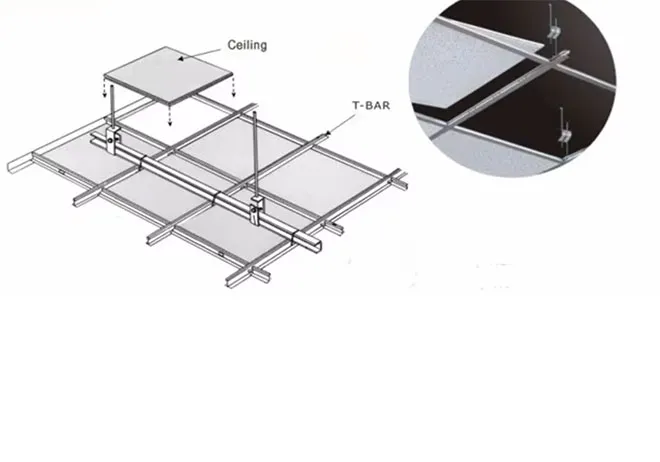Nov . 29, 2024 19:26 Back to list
Comparison of Gypsum Board and PVC Ceilings for Your Home Renovation Needs
Gypsum Board vs. PVC Ceiling A Comprehensive Comparison
When it comes to interior design and construction, the choice of ceiling materials can significantly influence both aesthetic and functional aspects of a space. Two popular options that homeowners and builders often consider are gypsum board and PVC (polyvinyl chloride) ceilings. Each has its unique set of characteristics, advantages, and disadvantages, making the decision largely dependent on specific needs and preferences.
Gypsum Board Ceilings
Gypsum board, also known as drywall or plasterboard, is a widely used material for constructing ceilings. Composed of gypsum plaster sandwiched between two sheets of heavy paper, this material is renowned for its excellent fire resistance, sound insulation, and smooth surface finish, which allows for easy painting or wallpapering.
One of the principal advantages of gypsum board ceilings is their durability. When properly installed, they can withstand various environmental stresses, but they do require careful handling and installation, as they can be prone to cracking in cases of water exposure or excessive impact. Additionally, gypsum board ceilings are easily customizable; they can be cut to fit any shape or size, making them versatile for varying architectural styles.
Moreover, gypsum is a natural material that is fire-resistant, which contributes to safety in residential and commercial buildings. Its acoustic properties also aid in soundproofing, making it an excellent choice for environments that require quiet, such as offices or bedrooms.
However, gypsum board ceilings can be relatively heavier than PVC options, leading to increased installation complexity. They are also not waterproof and can be damaged by moisture, leading to mold growth and necessitating repairs or replacements.
gypsum board vs pvc ceiling

PVC Ceilings
On the other hand, PVC ceilings are a modern alternative that has gained popularity due to their lightweight properties, water resistance, and ease of maintenance. Made from thermoplastic materials, PVC ceilings are available in a wide variety of styles, colors, and finishes, including glossy and matte options, making them highly versatile for interior design.
One of the standout features of PVC ceilings is their resistance to moisture and humidity. This quality makes them an ideal solution for areas prone to dampness, such as kitchens and bathrooms, where traditional materials might deteriorate over time. Furthermore, cleaning PVC ceilings is simple; typically, they can be wiped down with a damp cloth, removing dust and stains effortlessly.
The installation of PVC ceilings tends to be more straightforward, as they are lightweight and can often be installed over existing ceilings without the need for additional support. This not only reduces installation time but also minimizes labor costs.
However, while PVC ceilings have several advantages, it's important to consider some downsides. They may not provide the same level of sound insulation as gypsum board ceilings, which means they might not be the best choice for noise-sensitive environments. Additionally, PVC is a synthetic material, and concerns about environmental impact and off-gassing might deter some eco-conscious consumers.
Conclusion
In conclusion, both gypsum board and PVC ceilings offer distinct benefits and limitations. Gypsum board is ideal for those seeking durability, fire resistance, and excellent sound insulation, while PVC ceilings cater to consumers looking for a lightweight, moisture-resistant, and low-maintenance option. Ultimately, the choice between gypsum board and PVC ceilings should be based on specific needs, budget constraints, and personal preferences in design and functionality. Each material serves its purpose well, ensuring that there are suitable options for various applications in interior design.
-
Durable Ceiling T Grid Systems | Easy InstallationNewsAug.29,2025
-
PVC Gypsum Ceiling: Durable, Laminated Tiles for Modern SpacesNewsAug.28,2025
-
Pvc Gypsum Ceiling Is DurableNewsAug.21,2025
-
Mineral Fiber Board Is DurableNewsAug.21,2025
-
Ceiling Tile Clip Reusable DesignNewsAug.21,2025
-
Ceiling T Grid Modular DesignNewsAug.21,2025







